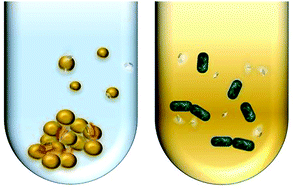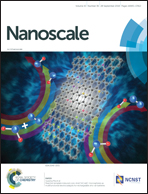Interaction of nanodiamonds with bacteria†
Abstract
Nanocarbons come in many forms and among their applications is the engineering of biocompatible and antibacterial materials. Studies have shown that diamond nanoparticles might have the interesting combination of both properties: they are highly biocompatible, while surprisingly reducing bacterial viability or growth at the same time. In this article, we consider for the first time the interaction of milled HPHT nanodiamonds with bacteria. These nanoparticles are capable of hosting nitrogen-vacancy (NV) centers, which provide stable fluorescence with potential use in sensing applications. An initial study was performed to assess the interaction of partially oxidized monocrystalline nanodiamonds with Gram positive S. aureus ATCC 12600 and Gram negative E. coli ATCC 8739. It was shown that for S. aureus ATCC 12600, the presence of these nanodiamonds leads to a sharp reduction of colony forming ability under optimal conditions. A different effect was observed on Gram negative E. coli ATCC 8739, where no significant adverse effects of ND presence was observed. The mode of interaction was further studied by electron microscopy and confocal microscopy. The effects of NDs on S. aureus viability were found to depend on many factors, including the concentration and size of nanoparticles, the suspension medium and incubation time.



 Please wait while we load your content...
Please wait while we load your content...